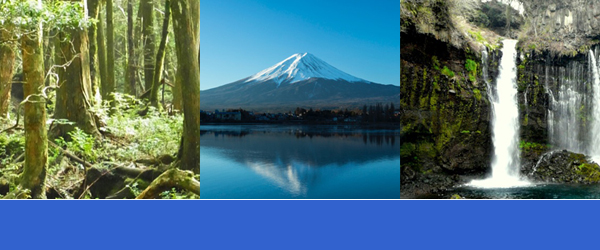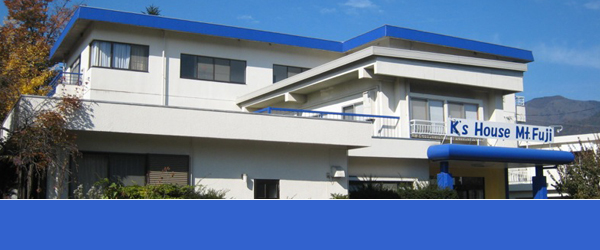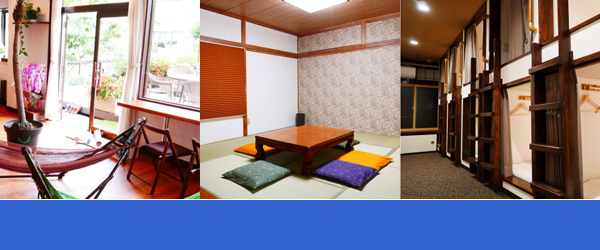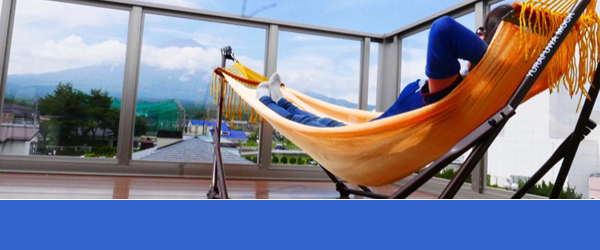Have you ever heard of the term “power-spots”? Here in Japan, it refers to the places believed to enhance visitors’ life energy. Not only will you feel relaxed or refreshed and move with a new energy, but also some miracles might happen to you after you visit these places… well, at least that’s what we want to believe. There are many places thought to be power spots nationwide and Mt. Fuji itself is definitely one of the strongest power-spots. Whether you climb it or view it from a distance, you will be in awe of its dignified beauty. You will feel something beyond this world.
And it’s not only the mountain itself from which you can feel the greatness of nature. There are unique power-spots on the foothills where you can experience something beyond this material world, something spiritual. Let us introduce you to some such places including some relatively new sites in the Fuji Five Lakes area.
Kitaguchi Hongu Fuji Sengen Shrine ~The base of Mt. Fuji worship~
Kitaguchi Hongu Fuji Sengen shrine, located in Fujiyoshida city in Yamanashi prefecture, is one of the largest and most prominent shrines on the north side of Mt. Fuji and has played an important role in the worship of the mountain. The main deity of the shrine is the goddess of Mt. Fuji known as Konohanasakuyahime-no-mikoto. Based on the legend that the goddess gave birth safely in a blazing fire, she is believed to protect childbirth and child-rearing. In addition, because the goddess is enshrined together with her husband, Ninigi-no-mikoto, and her father, Oyamatsumi-no-mikoto, visiting this shrine will bring you good luck with match-making, fulfillment in love and family happiness. The shrine is the starting point of the traditional Mt. Fuji climbing trail; there is a climbing gate next to the main shrine. It takes more than 10 hours to get to the summit from this spot and it’s here that you can get a taste of the Mt. Fuji pilgrimage.


Arayayama Shrine ~No.1 shrine to attract money?~
Arayayama shrine, located a ten minute walk from Kitaguchi Hongu Fuji Sengen shrine, is one of the three famous shrines that are said to bring good luck with money and as such it is always filled with visitors. The main deity enshrined here is the mountain god Oyamatsumi-no-mikoto who has been worshiped as a tutelary god of mountains and industries. In the worship hall, there is a stone called the Gojinseki which you can ask about whether your dreams will come true or not. (As of December 2020 February 2022, this stone is removed temporarily due to the coronavirus pandemic.) At the second station of Mt. Fuji stands an Okumiya, a type of shrine with stone circles nearby. A well-known management consultant, Mr. Funai, once said “if you do not want any economic problems, you should visit here.” Because of his influence, this place is frequently crowded with people despite of its remote location. Caution; the road to the Okumiya is closed during winter.



Kawaguchi Asama Shrine and Haha-no-Shirataki
Kawaguchi Asama shrine was established one year after the Jogan eruption in 864, considered to be one of the three largest eruptions of Mt. Fuji. In ancient times, people thought that the eruption was caused by the deities’ anger and so shrines were founded to appease the gods’ wrath. The precincts are filled with refreshing air and large trees. Among them, seven cedar trees are designated as natural monuments. The road next to the shrine or the trail at the back of it will lead you to a great view point for Mt. Fuji. The place has become popular amongst international tourists as you can take a photo of Mt. Fuji through the shrine gate. You have to go further up to see the beautiful “Haha-no-shirataki”- literally meaning Mother White Waterfall. It’s certainly a peaceful and relaxing place. In olden days, the pilgrims purified themselves in this waterfall. You will find a very small shrine here. The goddess enshrined there is Yorozuhatatoakitsushihime-no-mikoto, the deity of weaving. The waterfall may freeze in winter.




>
Can be born again? The Funatsu Tainai Lava Tree Molds
The Funatsu Tainai Lava Tree Molds are lava caves. At the time of the eruption, trees were knocked down and covered with lava. They eventually burned away and left behind empty spaces between the lava rocks. Despite being a power-spot filled with the energy of Mt. Fuji, relatively few people visit this place. “Tainai” means inside the body or womb. You can appreciate the beauty of this natural formation which resembles the inner parts of human body. The remarkable lava wall near the entrance resembles a rib cage. The path to mother’s Tainai, where Konohanasakuyahime-no-mikoto is enshrined, is so tiny that it’s as if you are passing through a birth canal. After going through father’s Tainai, dedicated to Ninigi-no-mikoto, and leave the cave, your body and soul may be totally purified, just like a new-born baby. Currently the opening days and opening time are not fixed due to the coronavirus pandemic. Please check before you go.



The water goddess in the lava forest Ryugu Cave
This is another lava cave located in the dense Aokigahara Jukai forest. The daughter of the ocean god known as Toyotamahime-no-mikoto is enshrined here and people used to pray for rain here in the past. It is prohibited to enter here as it could collapse at any moment, but it is worth visiting the entrance for its sacred atmosphere. Taking a walk around the surrounding lava forest is also recommended.

Did you find any place that attracts you? In this article, we learned about some power-spots on the north side of Mt. Fuji. Of course, there are interesting power-spots on the south side too. Visit the Mt. Fuji area to find your secret power-spots. For those who stay in K’s House Fuji View and K’s House Mt. Fuji, the staff will be very knowledgeable about the area and can give you some travel tips for your outing. K’s Travel’s Bus and Walking tour is also highly recommended especially for those who are looking for a guided tour.











